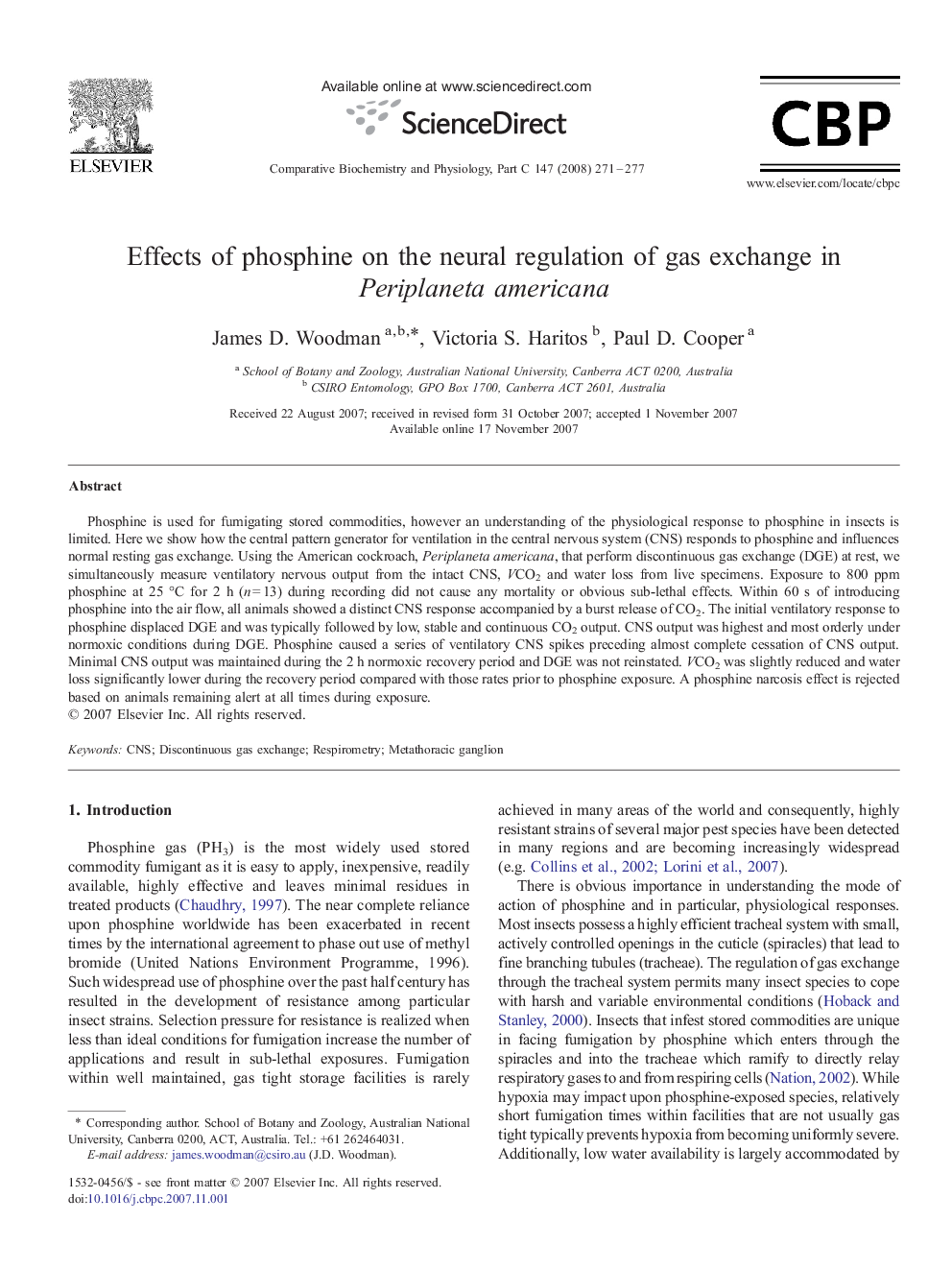| Article ID | Journal | Published Year | Pages | File Type |
|---|---|---|---|---|
| 1977672 | Comparative Biochemistry and Physiology Part C: Toxicology & Pharmacology | 2008 | 7 Pages |
Abstract
Phosphine is used for fumigating stored commodities, however an understanding of the physiological response to phosphine in insects is limited. Here we show how the central pattern generator for ventilation in the central nervous system (CNS) responds to phosphine and influences normal resting gas exchange. Using the American cockroach, Periplaneta americana, that perform discontinuous gas exchange (DGE) at rest, we simultaneously measure ventilatory nervous output from the intact CNS, VCO2 and water loss from live specimens. Exposure to 800 ppm phosphine at 25 °C for 2 h (n = 13) during recording did not cause any mortality or obvious sub-lethal effects. Within 60 s of introducing phosphine into the air flow, all animals showed a distinct CNS response accompanied by a burst release of CO2. The initial ventilatory response to phosphine displaced DGE and was typically followed by low, stable and continuous CO2 output. CNS output was highest and most orderly under normoxic conditions during DGE. Phosphine caused a series of ventilatory CNS spikes preceding almost complete cessation of CNS output. Minimal CNS output was maintained during the 2 h normoxic recovery period and DGE was not reinstated. VCO2 was slightly reduced and water loss significantly lower during the recovery period compared with those rates prior to phosphine exposure. A phosphine narcosis effect is rejected based on animals remaining alert at all times during exposure.
Related Topics
Life Sciences
Biochemistry, Genetics and Molecular Biology
Biochemistry
Authors
James D. Woodman, Victoria S. Haritos, Paul D. Cooper,
